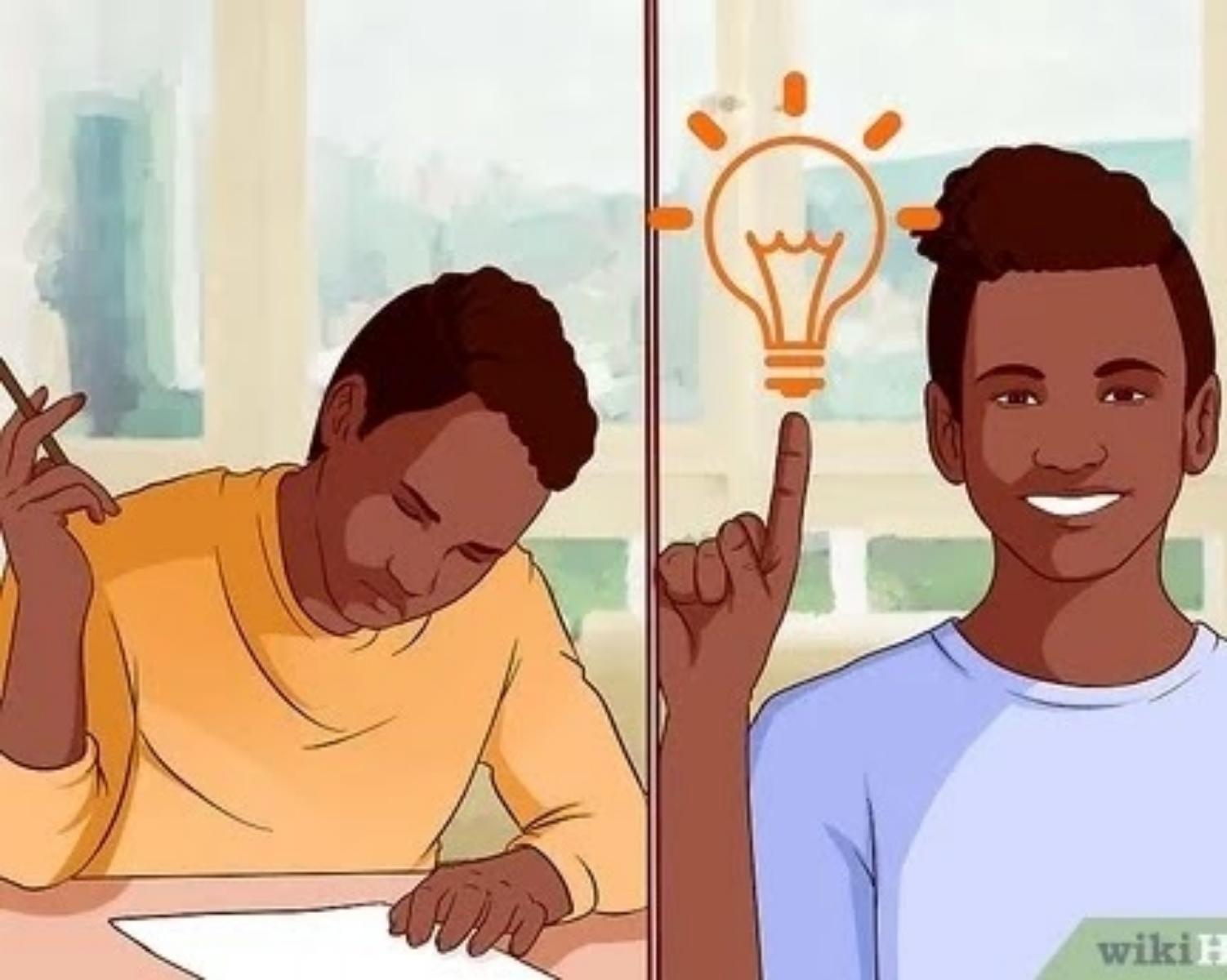How to Deal With Problems
Curated from: wikihow.com
Ideas, facts & insights covering these topics:
16 ideas
·2.22K reads
20
Explore the World's Best Ideas
Join today and uncover 100+ curated journeys from 50+ topics. Unlock access to our mobile app with extensive features.
Part 1: Setting a path to correct the problem
Following are the ways to approach towards the problems to get them solved
33
365 reads
#1. Stay as calm as possible.
It is common to overreact when you face a problem, but this can cause you to make bad decisions. Before you begin tackling your problems, get in control of your emotions, which may help you stay calm and more effectively deal with whatever you’re facing.
• Take a few deep breaths and repeat to yourself “let” when you inhale and “go” when you exhale. This can help control your heart rate and allow you to relax
• Repeat to yourself “I can get through this. It’s challenging, but I can find a solution.”
40
213 reads
#2. Accept responsibility for the problem.
Consciously acknowledge the problem and then accept responsibility for your part in it. This can allow you to begin actively and constructively dealing with any problem.
• Write down or list the problems and their causes. This can help you more readily visualize, accept, and even deal with a problem.
• For example, if you missed a mortgage payment, accept that you bear some, if not all, responsibility for this. Likewise, if you have bad grades, acknowledge the role that you played in getting those bad grades.
37
185 reads
#3. Evaluate situation before you respond.
If you find yourself dealing with a problem and you are not sure what or who caused it, take a moment to think before you react. It’s easy to blame someone else for problems, especially when you feel challenged or overwhelmed, but blaming others is counterproductive and may even cause further issues. Take a moment to determine if the problem was caused by external factors (other people or things beyond your control), internal factors (something you did or failed to do), or a mixture of the two.
36
152 reads
∆ External factors. If someone hits your car while it is parked in a parking lot, then this would be an example of a problem caused by external factors. You did not cause the accident and there was nothing you could have done to prevent it.
∆ Internal factors. If you arrive late to work because you hit the snooze button on your alarm too many times, then this would be an example of an internal factor. In this situation, it would be important to acknowledge your role in arriving late to work so that you can avoid making the same mistake in the future.
33
134 reads
#4. Find a quick solution.
Many problems require an immediate or fast solution. By staying calm and giving yourself as much time as you have, you can find a quick solution to your problem.
• Remember to take a deep breath before you start reacting.
• Evaluate or assess the situation and any information about it as quickly as you can.
• For example, if your toilet overflows, you can check the tank or the bowl to see what the issue is. Likewise, if someone is yelling at you and it appears they might get aggressive, you can quickly figure out that it’s best to remove yourself from the situation.
34
129 reads
Give yourself as much time as you think you have to break down the problem and react with a solution.
• For example, if you realize your insurance has expired and you didn’t get a renewal notice, call your insurance company and ask about the options to get coverage as soon as possible.
• Think about different solutions to the problem and then decide which is the most appropriate.
• For example, if your toilet overflowed, you can either call a plumber immediately or try and stop the water from running.
33
112 reads
#5. Identify problematic patterns.
When you sit down and acknowledge your problems, especially without blaming others, you may recognize some patterns in your behavior that lead to challenges. Identifying any patterns that lead to problems may help you more effectively deal with them.
• List anything that causes you problems. For example, “paying bills on time” or “excelling at work/ school.”
• Figure out what you have the power to change, which can help you start dealing with the problem.
33
103 reads
#6. Set goals to solve problems.
Part of dealing with any problem is setting a goal to overcome it. Set goals to deal with your problems that you can attain. Use the SMART method to set goals towards solving your problems. SMART means: specific, measurable, attainable, realistic, timely.
• For example, maybe you want to handle your delinquent mortgage. Your goal might be “I want to settle my mortgage issue with the bank within the next two months. I’ll contact my lender and speak about the issues surrounding my delinquency and ask about what options are available to mean to get my account back in good standing.”
35
101 reads
• Write down your problem and projected goal of solving it on paper. Visual cues can reinforce your willingness to deal with your problems. For example, you could write the following: “I spent my money unwisely and couldn’t pay the mortgage. I need to track my spending habits and get my account back in good standing.”
32
96 reads
#7. Keep your expectations realistic.
Keeping the expectations for outcomes to problems within reason can help you more effectively deal with them. Tying yourself to an unrealistic solution may set you up for additional problems and stress.
•Check if your expectations are realistic by looking at the goals you’ve set to solve the problem.
29
94 reads
• For example, depending on how much your mortgage costs and how far behind you are in payments, you may not be able to pay the entire amount back in two or three months. Remember that you have to eat and pay other bills. Consider speaking to your lender, partner, or financial planner about strategies to effectively solve the problem.
• Maintaining realistic solutions minimizes stress that might make it difficult to deal with the problem effectively.
28
70 reads
#8. Have faith in yourself.
Being negative and dwelling on your problems isn’t constructive. Have faith in yourself and your ability to deal with your problems in a constructive way, which can help you more effectively deal with them. Use your past victories to help inspire and bolster your strength in times of trouble.
• Give yourself a chance to focus on what is positive in your life. This may put your problems in perspective and show you that you can deal with any challenge life throws at you
29
103 reads
• Say a positive affirmation to yourself. For example, “I know I have a problem with my grades overall, but I am really good at chemistry class. I can apply my skills from that class to my other ones.”
• Surround yourself with individuals who also have faith in your abilities and bolster your willingness to solve problems quickly and effectively.
28
113 reads
IDEAS CURATED BY
CURATOR'S NOTE
Every person has problems: even the wealthiest individual on the globe has challenges in life. There are times when problems feel overwhelming and like you might not be able to get past them. But by taking responsibility for your problems and setting a path to correct them in a constructive way, you can deal with any problems that come your way.
“
Yogita 's ideas are part of this journey:
Learn more about personaldevelopment with this collection
Practicing empathy in relationships and communication
Understanding the importance of balance in personal and professional life
Defining your path in life
Related collections
Similar ideas
5 ideas
How to Deal With Family Problems
wikihow.com
7 ideas
7 Strategies to Deal With Difficult Family Members
psychologytoday.com
6 ideas
How To Deal With Difficult People
hackernoon.com
Read & Learn
20x Faster
without
deepstash
with
deepstash
with
deepstash
Personalized microlearning
—
100+ Learning Journeys
—
Access to 200,000+ ideas
—
Access to the mobile app
—
Unlimited idea saving
—
—
Unlimited history
—
—
Unlimited listening to ideas
—
—
Downloading & offline access
—
—
Supercharge your mind with one idea per day
Enter your email and spend 1 minute every day to learn something new.
I agree to receive email updates








